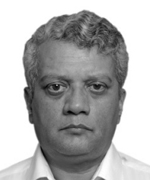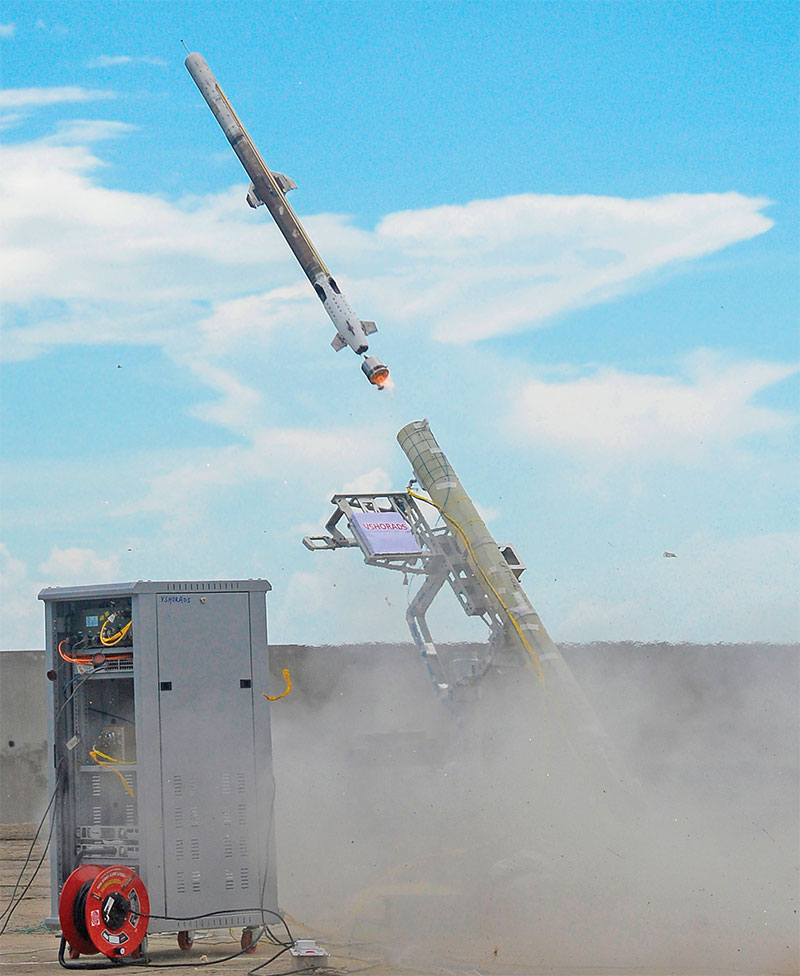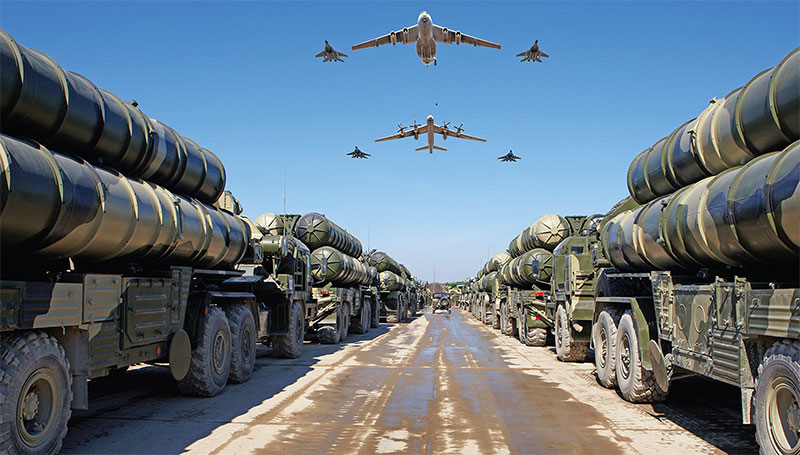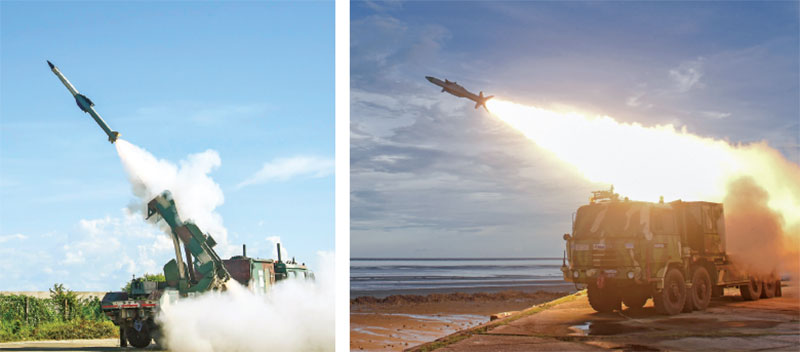Deterrence by Denial
 Air Cmde T.K. Chatterjee (retd)
Air Cmde T.K. Chatterjee (retd)
Back in the late 1970s, I joined an air defence (AD) squadron in the Eastern sector. We flew the MiG-21 FL. In the air defence role, we flew with two Ka-13 infrared missiles mounted under the wings. Equipped with an R2L radar, the pilots typically made visual contact with the targets before the radar could detect them. External jamming was unnecessary; the radar consistently jammed itself.
Moreover, even under 1G conditions, the missile’s kill envelope was smaller than the envelope in which my granddaughter flies her toy drone today. In the event of war, we were to operate from the Kashmir Valley and defend our airspace. Confidence, motivation, and valour aside, the thought that our radar-missile combination was a cause for concern always lingered in the back of our minds. We have made significant progress since then.
However, Balakot, which happened not too long ago, exposed our weaknesses in air defence capabilities. The Indian Air Force (IAF) was simply outranged in Beyond Visual Range (BVR) combat. It was the first time since the Bangladesh War that the IAF engaged enemy forces in the air. In Kargil, there was no engagement as neither side crossed the Line of Control (LC). So, have we really made significant progress?
New Threats
To add to our already existing worries, China has recently exhibited its version of the 5th and 6th-generation stealth aircraft. A good number of them will invariably be deployed in the Tibet region to offset the disadvantage of operating from high-altitude airfields. Eventually, a downgraded version of these aircraft will reach Pakistan Air Force (PAF). The numerical and technological gap in military capabilities between us and China is steadily widening. With our grossly inefficient and lethargic indigenous production effort, we can never match up in adequate numbers with our 4th generation light combat aircrafts (LCAs), and our convoluted and highly politicised external procurement policies will never permit the import of state-of-the-art airborne weapon platforms in time to enable our forces to fight an offensive war on even one front, let alone two. So, where does that leave us? What are our options?

DRDO is a developing a dual thrust solid motor VSHORADS
Offence or Defence
Deterrence is a must to avoid conflict. It can be deterrence by punishment or deterrence by denial. The former means conveying to the enemy that the cost of their offensive will be too high for them to bear. This applies more to the nuclear scenario. The latter case is defined as creating an environment that prevents the attacker from bringing its forces into the contested area and prevents the attacker from freely operating within the region. Then, numerical and technological inferiority, which the IAF has vis-à-vis the People's Liberation Army Air Force (PLAAF), can be bridged to a large extent.
Due to resource constraints in both aircraft and technology, the strength of the IAF should prioritise denying air superiority to the PLAAF rather than directly competing for it. This strategic approach reflects China’s efforts to deny US forces access to Taiwan and the South China Sea. Taiwan, too, aims to impose high costs on the PLAAF in the event of a Chinese invasion. For many years, the balance between offence and defence heavily favoured offensive strategies. However, robust networks and artificial intelligence-enabled low-cost systems are now shifting this balance toward defence.

India has contracted for five of Almaz-Antey’s S-400 ‘Triumf’ air defence missile systems
Mechanism of Denial
But where does this multi-layered defensive mechanism begin?
It should begin at the ultimate high ground on the battlefield -- space. Space assets of the enemy help his datalinks, communication, navigation systems, and intelligence gathering for battle on land, sea, and air. Damaging space assets in orbit or at launch must be the first action in a major conflict. It must, however, be remembered that our own assets in space would also be similarly vulnerable to enemy action unless they are hardened against such disruptions. The country should also be capable of launching replacement satellites quickly. Countries like China, India, or Pakistan would not explode a nuclear device in space to damage satellites through Electro Magnetic Pulse (EMP) or create massive space debris to render certain regions of space unusable since they have their own space-based assets in proximity. Direct attacks on targeted satellites should, therefore, be expected in our scenario.
In this context, the practice of dispersed Command and Control (C2) Centres and distributed responsibility mirrors historical military tactics and emphasises the importance of resilience and adaptability in modern settings. As we continue to face challenges that may disrupt our usual communication channels, embracing this model can significantly enhance our decision-making processes on the battlefield.
We are now facing a scenario in which stealth aircraft will penetrate our air defence screen. While this sounds ominous, as was demonstrated over Yugoslavia, where the Serbian forces downed a Lockheed F 117 using age-old Russian P-18 radar and SA-3 Surface to Air Missile (SAM). Even stealth aircraft can be detected and shot down if the conditions are correct. Most low-observable aircraft are designed to function against X-Band radars from a frontal aspect, so modifying these conditions by using a different frequency band or multi-static radars may make stealthy aircraft vulnerable to attack.
Next is the use of Electronic Warfare (EW). Electronic warfare remains a critical component of modern air defence systems. As technology evolves, EW capabilities continue to expand, providing new ways to protect friendly forces and disrupt enemy operations in the electromagnetic spectrum. The integration of EW with other domains, such as cyber and space, will likely shape the future of air defence strategies and tactics. After the Balakot crisis, it was revealed that voice commands were unusable due to the enemy’s very high frequency/ultra high frequency (V/UHF) V/UHF band jamming. Denying the use of designated portions of the EM spectrum reduces the efficiency of the invading forces. We need to significantly increase our efforts in this area.
Achieving a strategy of gradual denial will require the IAF to reduce its reliance on manned aircraft and prioritise robotising its forces by deploying unmanned aerial vehicles (UAVs). Recent conflicts, such as those in Nagorno-Karabakh and Ukraine, have demonstrated the transformative role of UAVs on modern battlefields.

DRDO developed QR SAM; and the Akash SAM system
In Nagorno-Karabakh, Azerbaijani forces effectively used inexpensive drones to compel Armenian air defence systems to reveal their positions. Once exposed, these systems were neutralized using armed or kamikaze drones. With Armenian air defences suppressed, Azerbaijani UAVs were then employed to devastate ground forces, facilitating a successful advance into disputed territories. This approach showcased how a low-cost UAV strategy could substitute for a traditional manned air force, enabling effective ground manoeuvres.
Similarly, in Ukraine, UAVs have proven instrumental in enhancing battlefield awareness and executing precision strikes. Ukrainian forces have utilized both military and commercial drones to target artillery batteries, armoured formations, and even high-value naval assets like the Moskva. These operations underscore the ability of UAVs to deliver significant tactical advantages at a fraction of the cost and risk associated with manned aircraft. This is why, even after three years, the famous Russian Air Force has been unable to obtain air supremacy over Ukraine.
The IAF must carefully examine these conflicts to identify affordable military UAVs and commercial drones capable of replicating these functions. Adopting such systems would enable the IAF to detect and target enemy ground forces without relying on vulnerable manned platforms. By leveraging the lessons learned from Nagorno-Karabakh and Ukraine, the IAF can develop an asymmetric air defence strategy that maximises cost efficiency and minimizes risks.
In this regard, Hindustan Aeronautics (HAL) Combat Air Teaming System (CATS) represents a positive advancement. The CATS programme envisions a manned fighter aircraft, likely a twin-seated HAL Tejas, functioning as the ‘mothership’ that oversees the unmanned components. This integration seeks to improve surveillance capabilities, facilitate autonomous deep-penetration precision strikes, and mitigate risks to human pilots in contested airspace. If the system operates as promised and is delivered within realistic timelines, it should serve as a significant force multiplier.
Lastly, there are the good old Surface-to-Air Missiles (SAM), with their associated sensors, which have been the backbone of the IAF AD system since its inception. From MANPAD (Man Portable AD) to SAMAR (Surface-to-Air Missiles for Assured Retaliation) to Akash, S-400, and Ballistic Missile Defence (BMD), Indian forces can lay out a layered defence, laterally and vertically, to create safe bubbles around their Vital Areas, Vital Points, and Tactical Battle Areas or Indian Navy’s (IN’s) carrier group strike forces.
India’s efforts towards BMD have been praiseworthy. Incoming ballistic missiles can today be intercepted in their endo- or exo-atmospheric flight stages by land-based or ship-based interceptors. As one of only five nations with an operational BMD system (alongside the US, Russia, China, and Israel), India demonstrates strategic autonomy and advanced technological capabilities. The Defence Research and Development Organisation (DRDO) is also working on further enhancing its BMD capabilities by incorporating laser-based interception technologies and expanding the operational range of its systems. These advancements will ensure comprehensive protection against evolving missile threats while maintaining strategic deterrence.
The Challenges
Despite its advancements, India faces challenges in fully integrating its air defence across the army, navy, and air force over the 5,000 km hostile borders and depth areas. A well-laid-out and integrated Anti-Access/ Area Denial zone with dispersed C2 nodes will be challenging but not impossible to penetrate for the enemy. For the invading force, the challenge will be to disintegrate the A2/AD zone. But, if we have resilience in our networks and can quickly repair damages caused by enemy firepower, it will result in a war of attrition. Such a contest may not be at a politically acceptable cost to the enemy, resulting in a peace settlement favourable to us.
Subscribe To Force
Fuel Fearless Journalism with Your Yearly Subscription
SUBSCRIBE NOW
We don’t tell you how to do your job…
But we put the environment in which you do your job in perspective, so that when you step out you do so with the complete picture.








